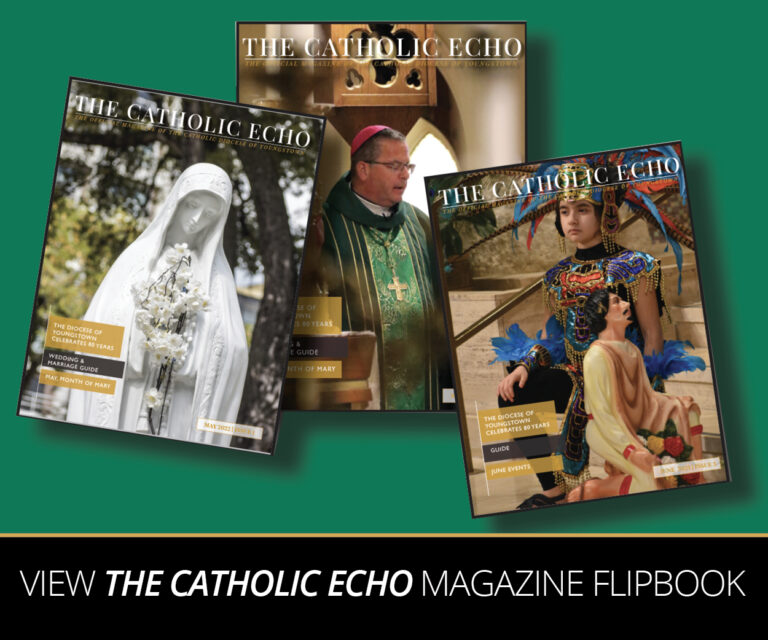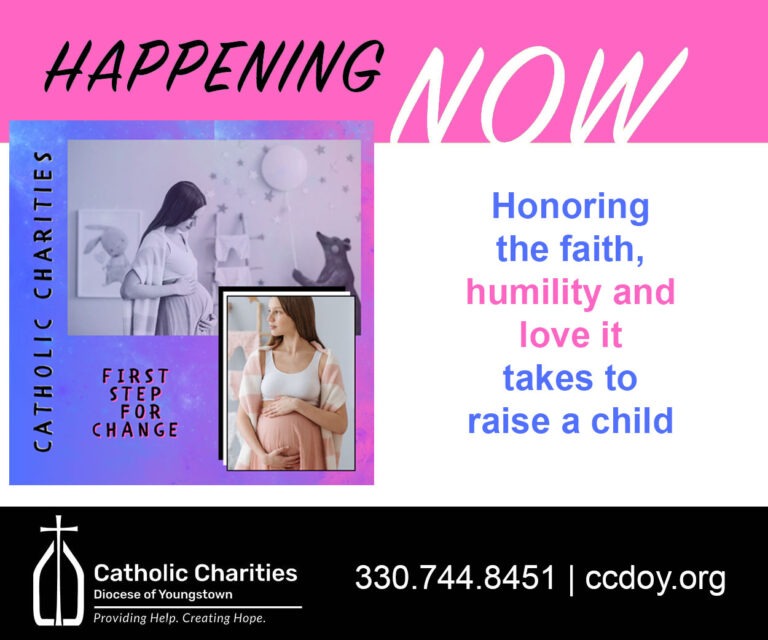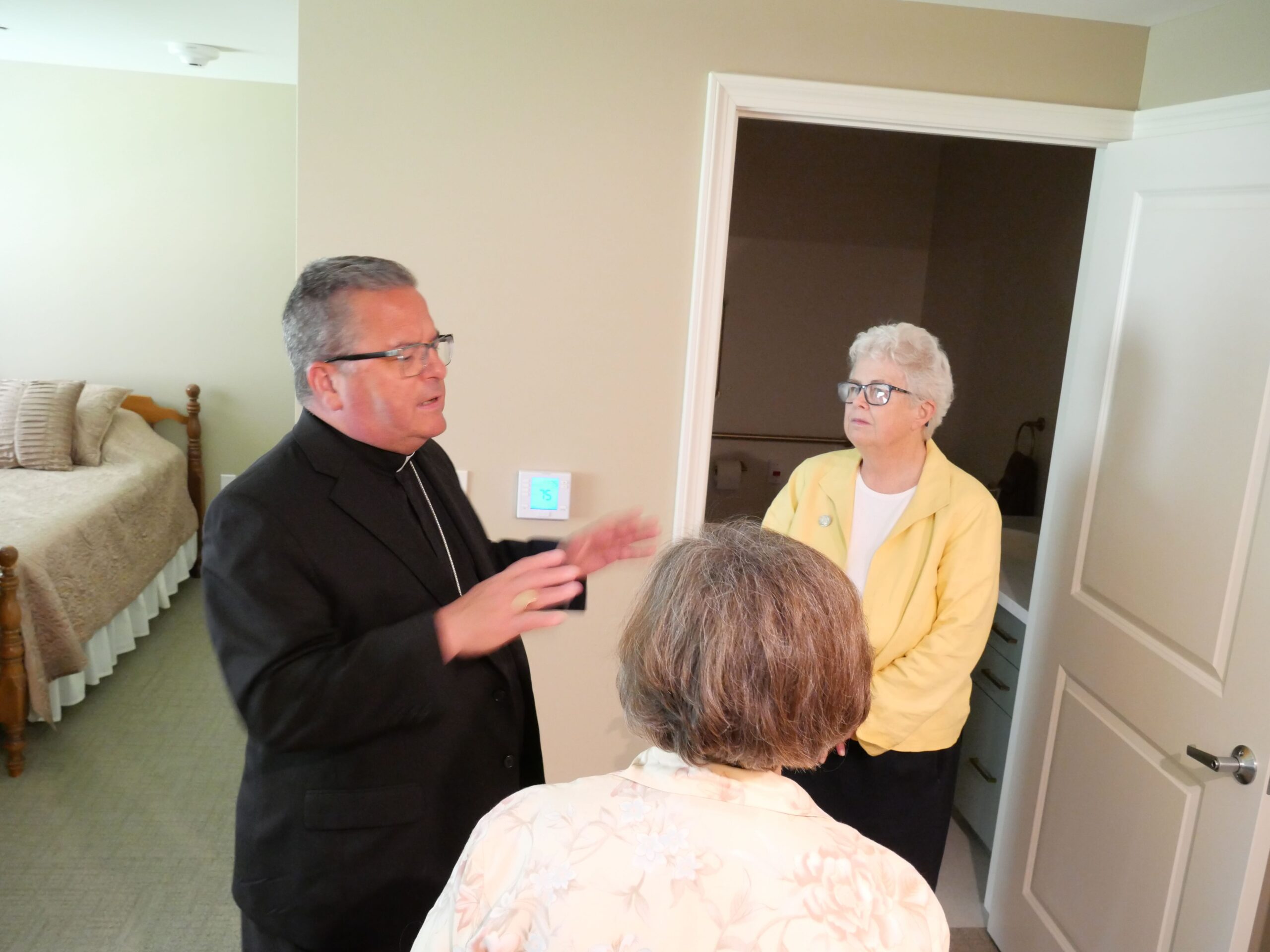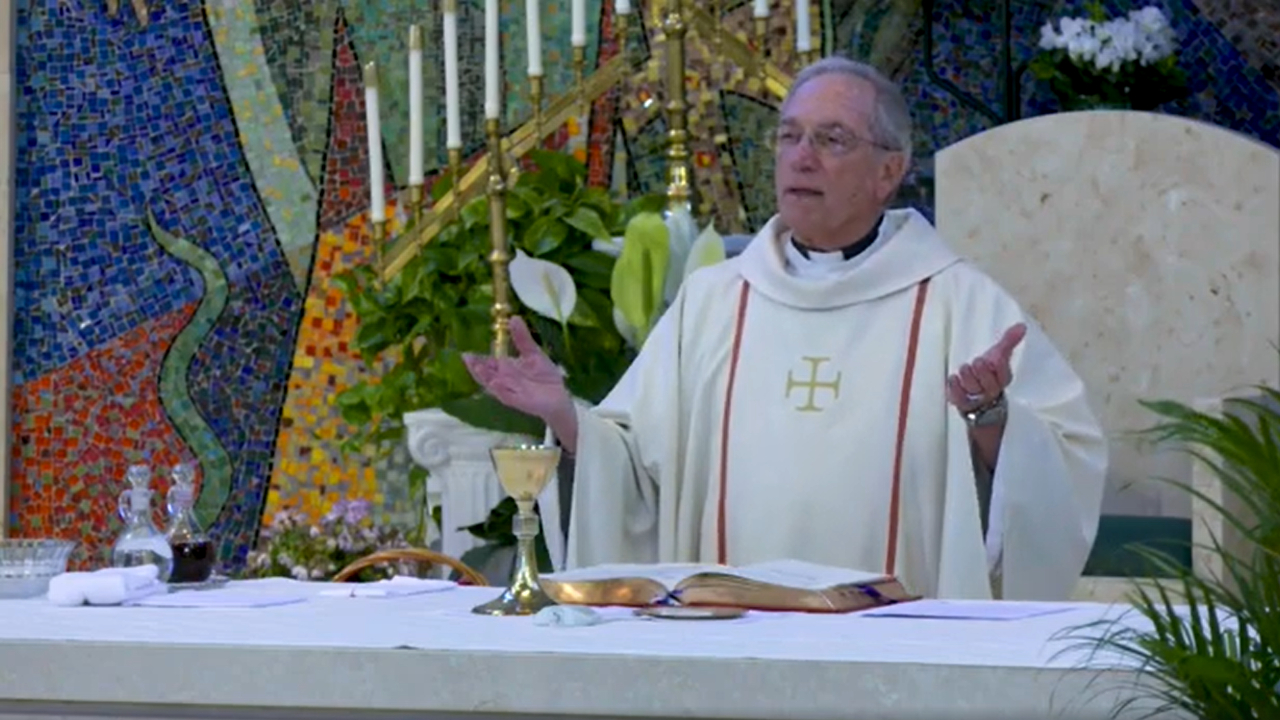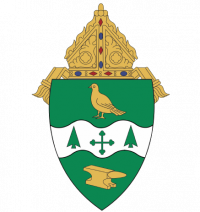
On Dec. 13, at St. Nicholas Greek Orthodox Church in Youngstown, Bishop David Bonnar and Metropolitan Savas Zembillas, of the Greek Orthodox Metropolis of Pittsburgh, met for the first time. The meeting was organized by the Society of St. John Chrysostom Youngstown-Warren Chapter.
The Society of St. John Chrysostom is committed to fostering unity among Roman Catholics, Eastern Catholics, and Orthodox. Over the years, the Society has invited Catholic and Orthodox bishops to meet, to discuss pertinent questions, and to develop closer relationships.
At the meeting, the two bishops were invited to address contemporary issues of mutual concern.
Bishop Bonnar presented five contemporary tugs-of-war. First, Bishop Bonnar named the pull between faith and secularism. One illustration of this struggle, inside and outside the Church, can be seen on how Sundays are spent: as a day for God and family or devoted to other priorities.
Another “tug of war” is between selfishness and selflessness. The worship of the “personal private trinity of ‘me, myself, and I’” is in direct contrast to the example of selflessness shown by Jesus Christ, who laid down his entire life for us. The bishop noted that one consequence of losing the struggle to selfishness has resulted in damage to the environment. But, ecumenical efforts have brought about greater care for our common home.
Another contemporary issue is the tension between hope and despair, between trust and suspicion. This tension is felt by individuals spiritually and mentally, as well as between laity and clergy in the Church. But trusting in God’s grace, in a special way given through the life of the Church, offers hope and meaning.
A fourth tug of war that Bishop Bonnar mentioned is the tension between unity and division. Media and politics so often work against unity. Followers of Christ need to embrace his prayer “That all may be one” (Jn 17:21).
The final tension that Bishop Bonnar identified is a “battle between a future faith and a nostalgic faith.” In the Church locally and beyond, as we continue to manage reductions in priest personnel and in the number of laity, one result is a reduction in worship spaces. These changes mean that an individual may not be able to continue to frequent the parish church of their youth and of their family history. These ties to church buildings are strong and significant. But, the “tug of war” is between those ties overcoming the mission of the Church, overshadowing the community that Christ is ever-building and is entrusting with the mission he received from the Father.
In his conclusion Bishop Bonnar noted the role that the Holy Spirit has in granting us the gifts that we need to engage these struggles. He said that, guided by the Holy Spirit, “As a Church we cannot … stop battling and praying.”

Metropolitan Savas’ remarks focused on the history between the Roman Catholic Church and the Greek Orthodox Church. He noted that, while the year 1054 is commonly recognized as the time of the divide between East and West, the history of division includes significant events in the centuries before and after 1054. The separation of the Catholic and Orthodox Churches occurred incrementally.
And then Metropolitan Savas recounted the current history of growing unity. He identified some of the significant moments in the recent decades: the meeting of Pope Paul VI and Patriarch Athenagoras in Jerusalem in 1964, the consistent presence of the Orthodox on the Feast of St. Peter and of the Catholics on the Feast of St. Andrew, the lifting of the mutual excommunications of 1054. Metropolitan Savas noted the friendly relations between the Pope and the Orthodox Patriarch that has been continued and deepened with every new successor since Paul VI and Athenagoras.
The division occurred incrementally, and the unity of the Churches is growing incrementally as well. Metropolitan Savas especially highlighted the role of the saints in taking steps toward unity. Saints that are recognized by both Churches, such as St. John Chrysostom, continue to inspire commitment to unity and express the depths of union. In the recent past, relics of the saints, such as St. Andrew, that had been moved to Rome have been returned to the Orthodox. And these gestures have yielded the fruit of growing restoration.
Even the historic meeting of Paul VI and Athenagoras was contemporary with the return of the relics of St. Sava to his Orthodox monastery. Metropolitan Savas (whose namesake is St. Sava) spoke of the inspiration and intercession that the saints continue to have in achieving full visible unity among the Churches.
During the course of that evening at St. Nicholas Church, the two bishops also noted the importance of the common celebration of Easter. There is immeasurable value of witness in a shared celebration of the Resurrection of our one Lord, Jesus Christ. Metropolitan Savas pointed to the growing focus on Easter 2025, when the date of Easter, East and West, coincides according to current calculations. That year is also the 1700th anniversary of the Council of Nicaea, a Council recognized by Catholics and Orthodox, and which gave us the formula for setting the yearly celebration of Easter. The prayer is that the Churches will commit to a common date every year going forward.
In Bishop Bonnar’s comments on Easter 2025, he included some words from Pope Francis spoken to the Patriarch of the Assyrian Church of the East on Nov. 19. The Pope’s words expressed a deep commitment to the two Churches to perpetually share the date of Easter. When Bishop Bonnar shared the words of Pope Francis, the room nearly erupted in applause.

Through prayer, study and friendship, for decades the Society of St. John Chrysostom has been committed to making unity a reality. The friendship among the society members was soon shared by the bishops. There was a clear connection between the two during the informal interactions before the conclusion of the event.
The formal activity of the evening ended with the two bishops reciting together the Chapter Prayer of the Society of St. John Chrysostom and each individually imparting their apostolic blessing. Overall, the evening ended with a strong sense of friendship, new and old.


